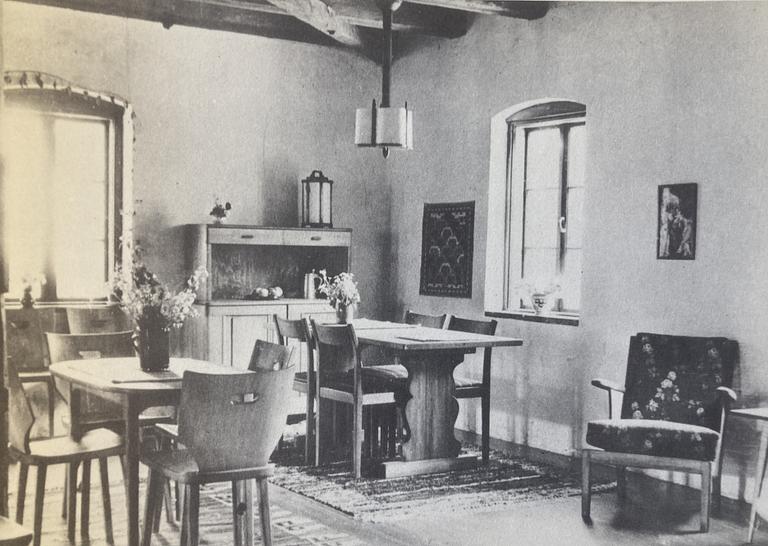Carl Malmsten
a rare pair of "Studiosus" armchairs, Sweden 1936.
Frame in pine, armrests, seat and back upholstered in leather. Height 78 cm, seat height 41 cm.
Wear and general patina, reupholstered, upholstery with stains, one of the backs with a glued crack at the top backrest mount.
Provenance
Judge of Appeal Harald Almqvist (1896-1953), together with his wife Harriet, had a summer home built in 1936 on a lakeside plot along the northern shore of Baggensfjärden in Saltsjö-Boo outside Stockholm. The present armchairs were purchased for the main cabin in the same year.
Thence by descent to the current owner.
Literature
Carl Malmsten, "Schwedische Möbel", Wepf & Co. 1954, model illustrated p. 19
More information
Original receipt dated 20 May 1936 is included.
Designer
Carl Malmsten is one of Sweden's most famous furniture designers. Many of his furniture are considered modern design classics, for example, the cane chair "Lilla Åland", the armchair "Farmor", the sofa "Samsas", the cabinet "Herrgården", and the furniture series "Vardag".
Both "Lilla Åland" and "Vardag" adopted the ideals of "beautiful everyday goods" of the 1940s. Their neat shape and frugal design quickly became timeless interior details that we still see in many homes today.
At the beginning of his career, Malmsten interned at various carpentry workshops and studied furniture at Nordiska museet and Skansen. He had his breakthrough in 1916 when he was commissioned to design part of the interior of Stockholm's City Hall.
During his career, Malmsten collaborated with several architects, such as Ragnar Östberg, Ivar Tengbom, and Ferdinand Boberg. He designed furniture for Stockholm's concert hall and Ulriksdal castle. He participated in the now iconic hosing exhibition at Liljevalchs gallery in 1917, where the term "Beautiful everyday goods" was coined.
























































